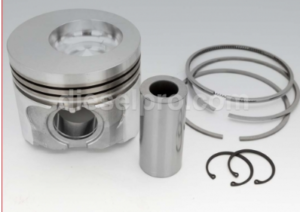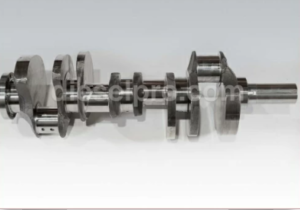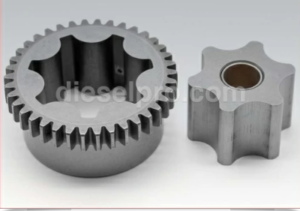
The Caterpillar 3208 marine engine has been a trusted workhorse in the marine industry for decades. Known for its reliability, mechanical simplicity, and serviceability, it has powered fishing vessels, workboats, and leisure craft around the world. However, like all diesel engines, the 3208 eventually requires an overhaul to maintain performance, efficiency, and reliability.
This section offers a comprehensive guide to overhaul considerations, addressing the inspection and replacement of critical components, identifying signs of impending failure, comparing pre-failure and post-failure overhaul approaches, and emphasizing Caterpillar’s official guidelines and the importance of using OEM parts.
Comprehensive Inspection and Replacement of Key Engine Components
A successful overhaul of the Caterpillar 3208 marine engine involves detailed inspection and the replacement of components based on wear, damage, and compliance with Caterpillar’s specifications. Below is a breakdown of key components to address during an overhaul.
1. Cylinder Heads and Valves

- Inspect for cracks, erosion, and warping. Pay particular attention to valve seats and guides.
- Check valve lash and spring tension. Weak springs or worn valves can impact compression.
- Replace valves and guides if wear exceeds limits. Use Caterpillar OEM parts for durability and performance.
2. Pistons, Rings, and Liners
Piston kit for Caterpillar 3208 Natural, Standard
- Measure piston skirt diameter, ring grooves, and liner wear. Look for scoring or excessive clearance.
- Check for cracks or burn marks. Replace pistons showing signs of heat damage or fracture.
- Install new piston rings and liners if necessary, ensuring correct fitment.
3. Crankshaft and Bearings
Crankshaft for Caterpillar 3208 Natural and Turbo engines.
- Check for scoring, cracks, or wear on journals.
- Measure bearing clearance using plastigage or micrometers.
- Replace main and rod bearings if wear exceeds specifications.
- Polish or grind crankshaft journals if minor damage is present. Severe damage requires replacement.
4. Camshaft and Lifters
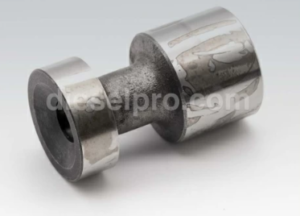
- Inspect cam lobes for pitting or wear.
- Check lifter faces and bores. Replace components showing wear patterns or loss of hardening.
5. Turbocharger
- Inspect compressor and turbine wheels for damage, debris, or oil contamination.
- Check axial and radial clearances. Replace the turbocharger if excessive play or wear is present.
6. Fuel Injection System
Injector Nozzle Asembly for Caterpillar 3208 Natural engines
- Test injectors for spray pattern, opening pressure, and leakage.
- Inspect high-pressure lines and fuel pump components. Replace worn or damaged parts.
7. Cooling System Components
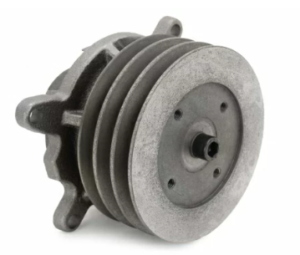
- Inspect heat exchanger, aftercooler core, and oil coolers for fouling, leaks, and corrosion.
- Replace seals, gaskets, and zinc anodes to ensure integrity.
- Check and replace the water pump if bearing play or leaks are detected.
8. Lubrication System
Oil Pump for Caterpillar 3208 Natural and Turbo engines.
- Inspect the oil pump for wear and clearance.
- Clean or replace oil coolers and pressure relief valves.
- Flush oil galleries thoroughly before reassembly.
9. Engine Mounts and Vibration Dampers
- Inspect rubber mounts for deterioration or cracking.
- Check vibration dampers for slippage or damage. Replace as necessary to protect crankshaft integrity.
10. Gaskets and Seals

- Replace all gaskets and seals during an overhaul to prevent future leaks. Use only Caterpillar-approved components.
Recognizing Signs Indicating the Need for Overhaul
Timely overhaul decisions can mean the difference between planned maintenance and costly catastrophic failure. Recognizing these signs is key to proactive servicing.
1. Increased Oil Consumption
A rise in oil consumption often signals worn piston rings, cylinder liners, or valve guides.
2. Loss of Compression
Hard starting, reduced power output, or misfires may indicate compression loss due to valve leakage, piston damage, or head gasket failure.
3. Excessive Exhaust Smoke
Blue smoke suggests oil burning, while black smoke indicates poor fuel combustion. White smoke may point to coolant leaks into combustion chambers.
4. High Blow-By Levels
Excessive crankcase pressure or vapor from the breather signals piston ring or liner wear.
5. Declining Performance
A gradual drop in horsepower, torque, or fuel efficiency often precedes mechanical failure.
6. Unusual Noises
Knocking, ticking, or grinding sounds can indicate bearing wear, valve train issues, or component failure.
7. Contaminated Oil or Coolant
Metallic particles in oil or coolant contamination suggests internal damage or seal failures.
8. S·O·S Fluid Analysis Results
Caterpillar’s Scheduled Oil Sampling (S·O·S) program provides critical data on wear metals and contamination, helping identify overhaul timing.
Recommendations for Pre-Failure vs. Post-Failure Overhauls
Pre-Failure Overhaul
Advantages:
- Minimizes downtime and costly emergency repairs.
- Allows planned scheduling and resource allocation.
- Increases the likelihood of reusing components, reducing overall costs.
- Ensures continued reliability and performance.
Ideal When:
- Fluid analysis shows increasing wear.
- Engine performance metrics decline gradually.
- Preventive maintenance budgets and timelines allow for planning.
Post-Failure Overhaul
Disadvantages:
- Higher repair costs due to catastrophic damage (e.g., broken crankshaft, holed piston).
- Longer downtime and vessel immobilization.
- Potential collateral damage to surrounding systems (cooling, exhaust, fuel).
- Lower likelihood of reusing major components.
Occurs When:
- Engine fails suddenly with no warning.
- Symptoms of wear were ignored or undetected.
Conclusion:
A planned pre-failure overhaul is almost always the preferred approach. It minimizes operational disruption, reduces costs, and maximizes the lifespan of reusable parts.
Caterpillar’s Official Guidelines and Use of OEM Parts
Why Follow OEM Guidelines?
Caterpillar’s official Operation & Maintenance Manuals and Service Manuals provide detailed specifications, torque settings, and procedures. Adhering to these ensures:
- Correct assembly and clearance tolerances.
- Compliance with manufacturer warranties.
- Maximized performance and reliability.
Importance of OEM Parts
Using genuine Caterpillar parts is critical for:
- Durability: Designed to withstand marine conditions.
- Compatibility: Precision fitment and material quality.
- Performance: Optimized for engine specifications and operating conditions.
- Support: Maintains warranty and service agreements.
Avoid counterfeit or substandard aftermarket parts, as they may cause premature failure and jeopardize safety.
Summary and Final Recommendations
An overhaul of the Caterpillar 3208 marine engine is a significant but necessary investment. By conducting a comprehensive inspection, recognizing early signs of wear, and adhering to Caterpillar’s official guidelines, operators can:
- Extend engine lifespan
- Enhance performance and fuel efficiency
- Avoid catastrophic failures
- Control maintenance costs
Always plan ahead, use genuine Caterpillar parts, and follow OEM procedures for a successful and efficient overhaul.
Additional Resources
Practical Guide To Servicing The Caterpillar 3208 Marine Engine
Marine CAT 3208 Component Maintenance Life
Caterpillar 3208 Injectors: High-Quality Aftermarket Options from Diesel Pro Power
The History of the Caterpillar 3208 Engine
Common Applications of the Caterpillar 3208 Engine
Troubleshooting Common Issues with the Caterpillar 3208
Maintenance Tips for Maximizing the Life of Your Caterpillar 3208 Engine
Comparing the Caterpillar 3208 to Other Marine Engines



 Free US Calls: 1-888-433-4735
Free US Calls: 1-888-433-4735 International: 305-545-5588
International: 305-545-5588
